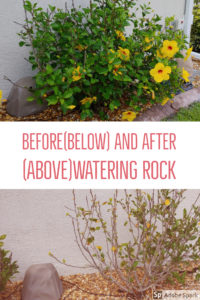Planning your garden layout.
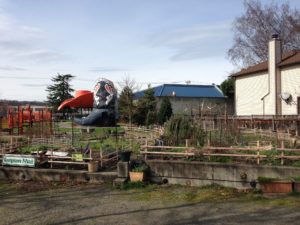
Have you ever considered planning your garden layout? Ever feel like you’re in a gardening rut? Maybe your harvests in years past have not produced the yields you anticipated and you are doubting your dirt. You start your February gardening full of excitement and anticipation. Seed planting and tool preparation are underway but you aren’t sure where to transplant your seedlings when it’s time to begin your spring gardening. Rather than drawing up pretty landscaped garden beds, let’s think outside the garden box and talk about some “Gardening Goals”.
When you are planning your garden layout consider the following:
• Creating healthy soil while growing healthy plants
• Protecting smaller plants from too much sun exposure
• Maximizing space to allow for ample room for optimal growth
• How do I keep the pests out? (This one can get personal!)
Companion Planting
If you haven’t guessed, I’m talking about companion planting! By placing certain plants near others, you can achieve great gardening success. When you are planning your garden layout consider compatible characteristics of each plant to serve another. You can also be stifling the potential of some of your varieties and not even know it if you’ve never applied these principles before.
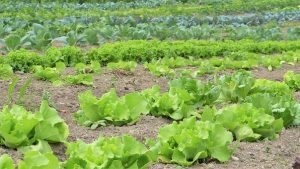
Good Neighbors
While most vegetables and flowers are of friendly nature, plants, like anything in nature, compete for nutrients and sunlight. Keeping that in mind, planting tall plants behind shorter plants will provide protective shade. Also, varieties with deeper roots pair well with shallow rooting plants since they don’t compete for nutrients and water from the same place. Try planting climbing squashes or potatoes behind bushing beans.
Everyone knows that the best neighbors are neighbors that aren’t home! Starting smaller, stalky vegetables like broccoli in front of something that needs a lot of space, like squash or watermelon, but typically doesn’t require a lot of space until later in the season is beneficial for two reasons. One, the broccoli will be ready to harvest well before the vines push them out. Two, the nutrients pulled to the surface of the soil after harvest will benefit the new growth and encourage more fruit!
Some herbs and flowers also serve important roles when planning your garden layout. Planting basil among tomatoes repels the dreaded (but cunningly cute) hornworm. Mint and marigolds repel mice, rabbits and ants. Zinnias, dill and carrots all attract ladybugs and spiders which eat aphids and other invasive pests.
Dill also attracts butterflies so be careful not to plant it too close to your leafy greens. You’ll end up feeding very hungry caterpillars. It’s a noble thing to contribute to the butterfly species but you don’t have to do it at the expense of your greens.
While garlic and onions repel a plethora of pests, they can also alter the flavor of some neighbors… which makes for a not so yummy surprise. Keeping straight who grows best next to whom can be overwhelming at first. Check out this companion planting chart.
Trellising
Trellises don’t just look great in a garden. When used correctly, they can maximize your gardening space for optimal seed planting. You’ll be amazed at how much more you can plant when you get your vines off the ground! That’s not all – the natural shade protects all below it. The bugs are easier to spot (and get rid of!), and you’ll love the show of green leaves and yellow flowers as your gardening backdrop. You can use standing trellises, arching trellises, small trellises and large. I just love trellises (almost as much as the squash!) Consider trellises when planning your garden layout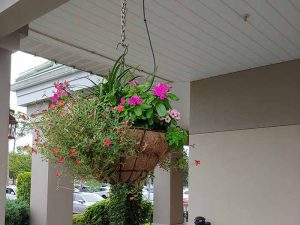
Hangers
Hanging baskets are fun because you can move them around to underserved areas in the garden. You can direct sow seeds into a hanging basket during your February gardening preparation and save time during the planting season. Small seeds like dill or lavender are great for baskets. Then, during the spring gardening season, you can move them as you need to. Is your dill too close and drawing caterpillars? Move it amongst your tomatoes to attract lady bugs and preying mantis. Need those bugs somewhere else? Move it, again. So easy. So great Consider hangers when planning your garden layout
Herbs like rosemary, sage and mint spread rapidly and can easily overtake your spring gardening beds. Without attentive attention and pruning, they will choke out your beds and deprive other vegetables of vital nutrients. That’s why I prefer to pot my herbs in hanging baskets or colorful pots around my garden. Like the dill, I can move them in, out and around as I see fit.
Save yourself some unnecessary planning and seed planting and sprinkle those herbs into a pretty pot. Enough said.
Succession Planting
While you are planning your garden layout for spring gardening, it’s important to consider the timing of your harvest. Many gardeners do a large amount of seed planting during their February gardening only to have one bountiful harvest and then nothing. This results in an empty pantry when either the vegetables have been eaten or expire because they couldn’t be eaten in time.
Seed planting in succession means allowing enough space to create several rows of the same vegetable. Things like carrots, broccoli, brussel sprouts and lettuce harvest at one time. To ensure continuous fresh vegetables come to your table, plant a smaller amount during February gardening and plant every four to five weeks throughout the spring gardening season. Depending on your area, this is good practice for a new harvest every few weeks.
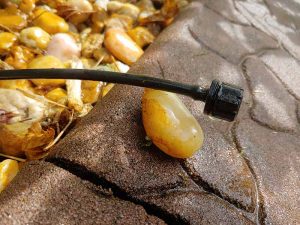
Irrigation
It may not seem all that important to think about now, but irrigation planning when planning your garden layout is an imperative part of February gardening. In preparation for spring gardening, you’ll want to be sure your location has good drainage. Another point to work into your planning is that not all plants require the same amount of water. The ol’ water hose method will get the job done but requires extra attention and time. Drip irrigation is your friend, my friend. It takes a lot of planning and guess work out of the spring gardening preparations.
With watering rocks drip irrigation system, you can directly adjust the water amount to each individual plant, fill up the rock with five gallons of water and sit back and enjoy your garden for several days without lifting a finger. They make great irrigation systems for hanging baskets, as well! Watering rocks are portable and expandable. As you make your garden preparations, they are completely customizable to your needs. For more gardening preparation tips, visit us at www.watering-rocks.com.
